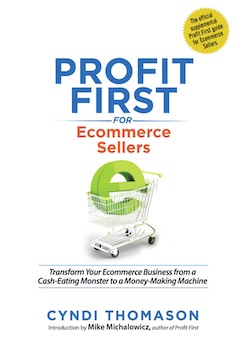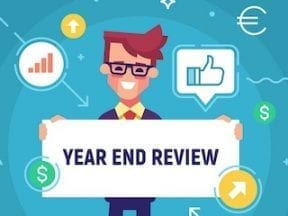Editor’s Note: Contributor Cyndi Thomason owns Bookskeep, an accounting and consulting firm for ecommerce companies. She is an advocate of Profit First, a cash management framework to help merchants obtain and retain profitability. Her book, “Profit First for Ecommerce Sellers,” is newly published. What follows is an excerpt from Chapter Two.
The Profit First framework works for all businesses. But it is just that: a framework. My firm has taken this foundation and built a structure specifically for ecommerce sellers. With these few additional techniques, you will position your business for permanent profitability.
The Profit First solution doesn’t attempt to change who you are or how you behave. That is impossible. The solution sets up a system that channels your existing behavior toward the outcome that serves you.
Foundation
The foundation of Profit First is setting up five bank accounts.
- Income
- Profit
- Owner’s Compensation
- Taxes
- Operating Expenses
This is the structure your profits will be built on. Set these up as checking accounts. The flexibility offered by checking accounts far outweighs any minuscule interest from savings accounts. Most banks allow you to assign a name to the account that is displayed online and on statements in addition to the account number. Name your accounts according to their purpose.
4 Principles of Profit First
Let’s take a moment to talk dietary science. No groans, please. This stuff is fascinating.
In 2012, a report by Koert Van Ittersum and Brian Wansink in the Journal of Consumer Research concluded that the average plate size in America had grown 23 percent between the years 1900 and 2012 — from 9.6 inches to 11.8 inches. Running the math, the article explains if this increase in plate size encourages an individual to consume just 50 more calories per day, that person will put on an extra five pounds each year.
But using smaller plates is just one factor. A Twinkie on a small plate is still a Twinkie. There is more to a healthy diet, and it is based on four core principles of weight loss and nutrition.
- Use Small Plates. Using smaller plates starts a chain reaction. When you use a small plate, you get smaller portions, which means you take in fewer calories. When you take in fewer calories, you start to lose weight.
- Serve Sequentially. If you eat vegetables first, which are rich in nutrients and vitamins, they will start satisfying your hunger. When you move on to the next course — say, mac and cheese or mashed potatoes — you will automatically eat less. By changing the sequence of your meals by eating your vegetables first, you automatically bring a nutritional balance to your diet.
- Remove Temptation. Remove any temptation from where you eat. People are driven by convenience. If you’re anything like me, when there’s a bag of Doritos sitting in the kitchen, it calls out to you constantly — even when you aren’t hungry. If you don’t have junk food in the house, you’re probably not going to run out to the store to get it. You’re going to eat the healthy food you stocked instead.
- Enforce a Rhythm. If you wait until you are hungry to eat, it is already too late, and you will binge. Then you are likely to eat too much and stuff yourself. You go from starving to stuffed, and back to starving again. These peaks and valleys in your hunger results in way too much calorie consumption. Instead, eat regularly so that you never get hungry. Without the peaks and valleys, you will eat fewer calories.
Though they don’t realize it, the folks in the diet industry know quite a lot about growing a healthy business.
Here’s how ecommerce sellers apply the four principles.
- Use Small Plates. When money comes into your Income account, it simply acts as a serving tray for the other accounts. You then periodically disperse all the money from the Income account into different accounts in predetermined percentages. Each of these accounts has a different objective: one is for profit, one for owner compensation, another for taxes, and another for operating expenses. Collectively, these are the five foundational accounts to get started — Income, Profit, Owner’s Compensation, Taxes, and Operating Expenses. Advanced users will use additional accounts.
- Serve Sequentially. Always allocate money based on percentages. Never pay bills first. The money moves from the Income account to the Profit account, then Owner’s Compensation account, then Taxes, and finally Operating Expenses. You pay bills only with what is available in the Operating Expense account. No exceptions. And if there isn’t enough money left for expenses? This does not mean you need to pull from the other accounts. What it does mean is that your business is telling you that you can’t afford those expenses and need to get rid of them. Eliminating unnecessary expenses will bring more health to your business than you can imagine.
- Remove Temptation. Move your Profit account out of arm’s reach. Make it hard and painful to get to that money, thereby removing the temptation to “borrow” (i.e., steal). Use an accountability mechanism to prevent access, except for the right reason.
- Enforce a Rhythm. Allocate funds and pay bills twice a month (specifically, on the 10th and 25th). Don’t pay only when there is money in the account. Get into a rhythm of allocating your income and paying bills twice a month so that you can see how cash accumulates and where the money really goes. This is controlled, recurring, and frequent cash flow management — not seat-of-your-pants management.





